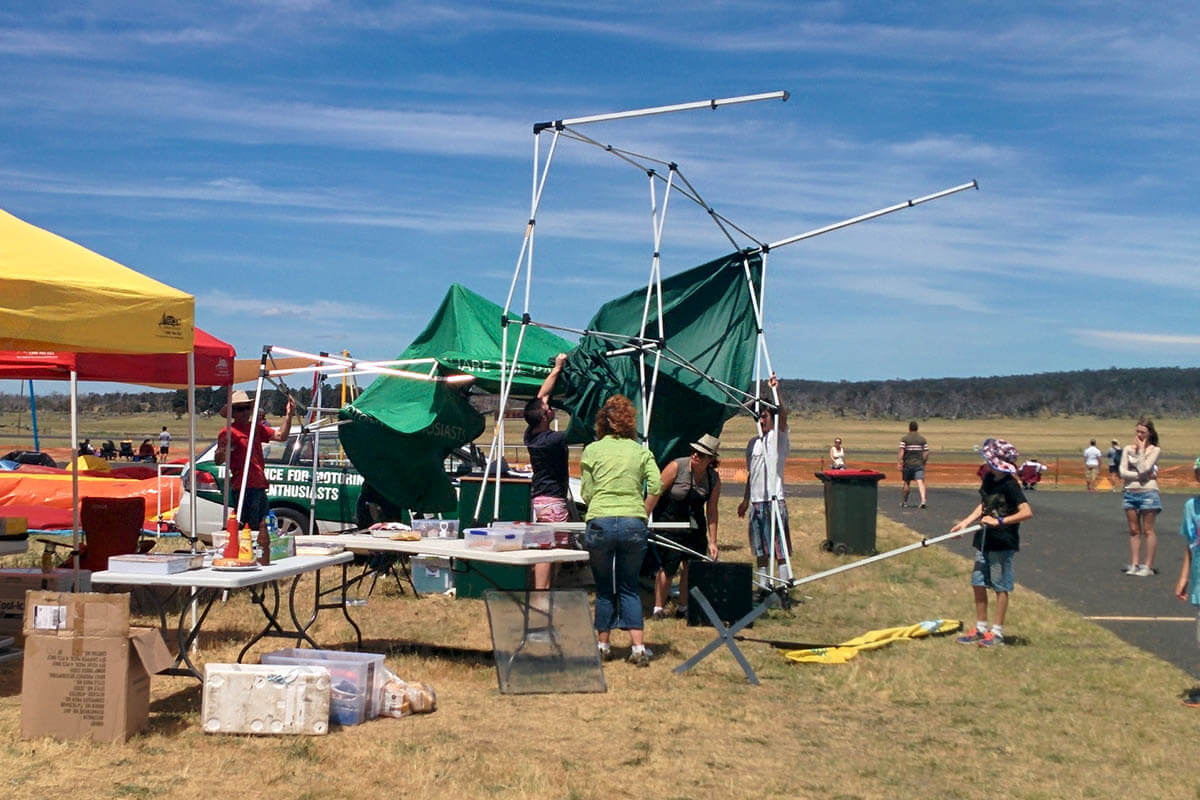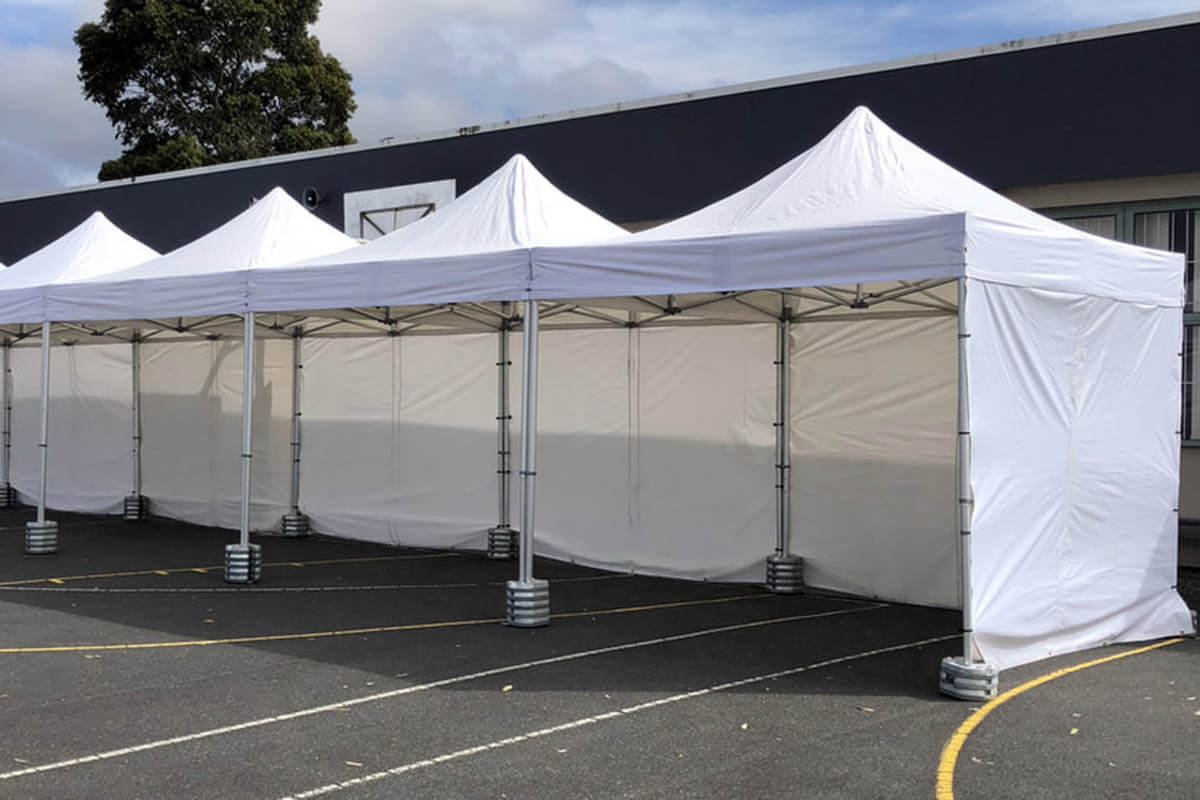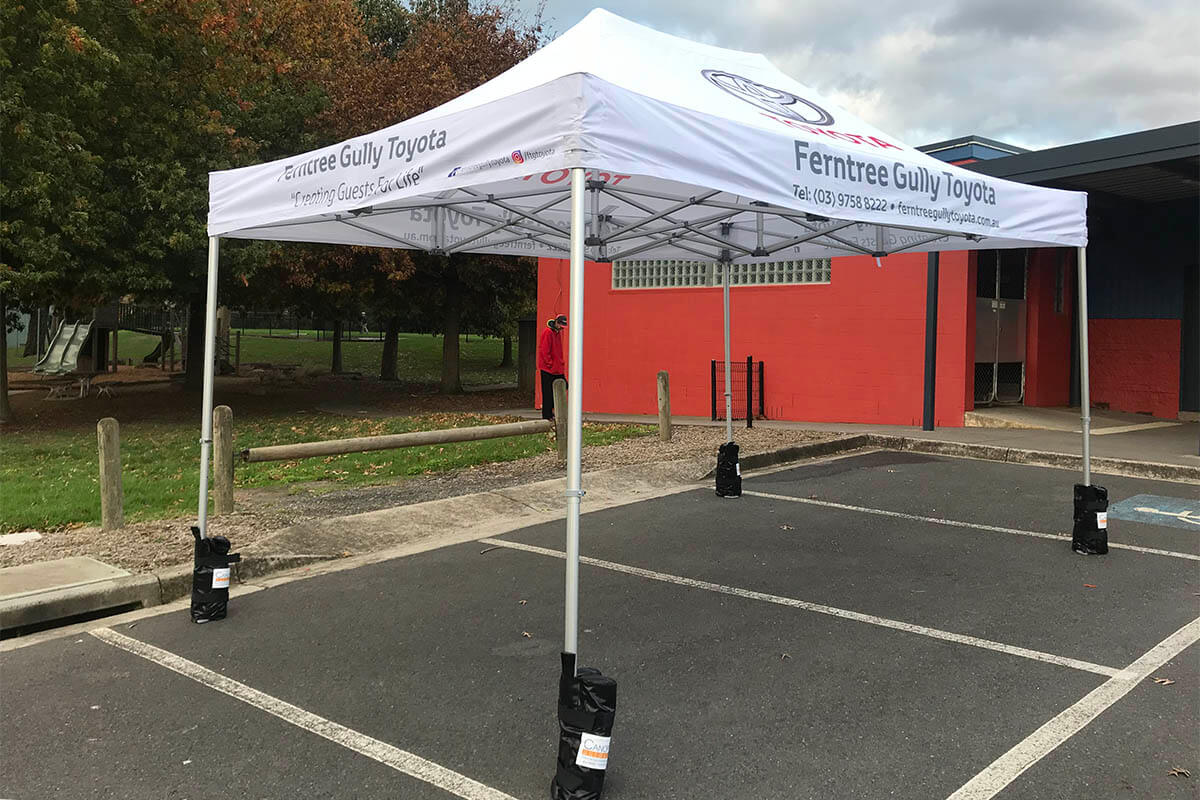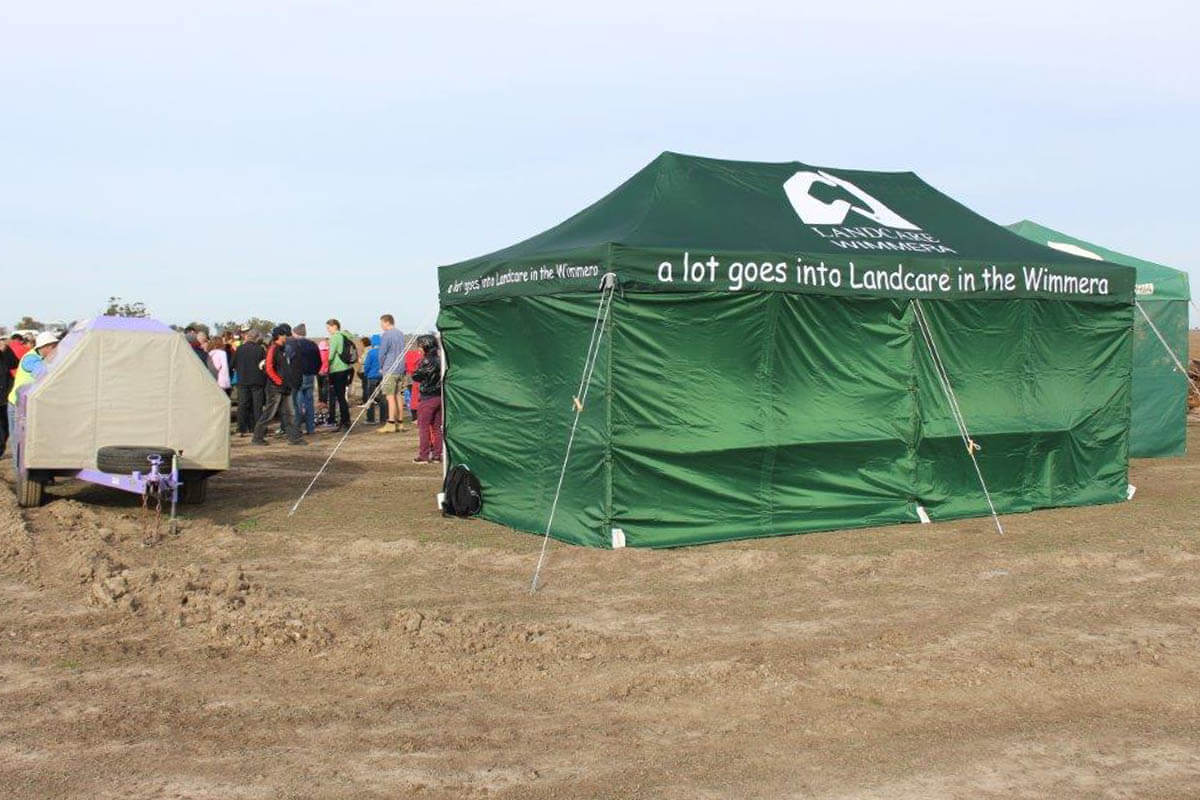
Over the last 15 years, we've seen a lot of marquees get damaged in weather. However, interesting the majority of damage (well over 95%) that we've seen has been because owners have not properly secured their marquees to the ground - not because the structures themselves have failed.
It is extremely important to secure marquees correctly with one of the following methods and more weight is required depending on the wind speeds that the marquee is being used in.
Cast Iron Plates

Pros
✓ Known weight - excellent for council events
✓ Hard wearing
✓ Easy to increase weight
✓ No maximum weight
Cons
✗ Most expensive weighting solution
✗ Expensive to freight
Cast iron leg weights are our preferred method of weighing a marquee down and will always be our recommendation. These are what will be required by councils and markets as there is no dispute about their hold down equivalent.
Our leg weights are sold in 15kg sets, but made in two 7.5kg plates to meet OH&S carry limits. They also have a built in carry handle that makes transporting and loading of the leg weights easy.
Simple and easy to use
There is no sand to find, or water to fill, these are a simple and easy method to weighing your marquee down.
Just set up your marquee, and then slip these over the feet. Stack each second layer at a 180 degree turn to interlock the weights over the foot plates.
Stack multiple plates together
You can use as many cast iron leg weights as you need. Unlike all the other weighing systems, these don’t “max out” because you just keep on stacking them higher and higher until you reach the requirement for the wind speed zone you’re in.
Sandbags

Pros
✓ Relatively low cost around $25 - $35
✓ Cheap to freight nationally
✓ Light to transport if empty
Cons
✗ Sand not included
✗ Not very high in mass when filled
✗ Can get messy if sand leaks
✗ Limited to approx 8kg per bag
Sandbag marquee weights are also a really popular method to weigh marquees down. They’ve been around for years and are simple enough to use.
Sand is not included
We don’t include, or even know of anyone that includes sand with their sand bags. You need to purchase additional sand (you cannot take it from a beach - that’s illegal!) to put into your bags.
Wear and tear
Obviously these are used on the marquee legs, and the marquee feet sit on concrete and other hard surfaces. As the sandbags age, they will wear, and have the potential to spring leaks.
This means that you’ll need to use another bag inside your sandbag to hold your sand together, but really it can start getting a bit messy.
Pegs & Ropes

Pros
✓ Generally included with marquees
✓ Relatively simple to use
✓ Low cost
Cons
✗ Not all brands supply good pegs & ropes
✗ Ground conditions are variable
✗ Potential trip hazards
✗ Large footprint once installed
Pegs and ropes are a tried and tested method to secure a marquee to the ground but there are a lot of things to consider when using them and to a degree requires a little extra care and attention by the user compared to all the other systems.
The soil conditions
First and foremost, you need to be using the right type of peg and rope for the particular conditions you’re in. A peg for sand is very different to a peg for soil or clay.
Then, if you are setting up on soil or clay, you need to consider what the weather has been like lately. For example, if it’s been raining for the last 3 weeks, and the ground is soft, a peg that might normally work may not be adequate in those conditions.
The best solution here is to ensure you get a marquee with the largest and strongest pegs - although they still might not work in sand!
Getting the right angle
A peg needs to be driven into the ground at an angle that’s perpendicular to the direction of the rope.
We recommend that the ropes that come off the marquee are set up at an angle between 30 and 60 degrees. A good balance is driving in the pegs at a 45 degree angle.
If the angle is too steep, it won’t go deep into the ground (which is also generally where you find the harder soil), and if the angle is too shallow it won’t provide enough resistance on the rope to hold the marquee down.
Don't even use cheap pegs & ropes
In our opinion, if you have low quality pegs and ropes, we wouldn't even bother to use them. All they'll do is provide a false sense of security and an unexpected wind may turn an otherwise happy situation very sour.
What to look out for:
- Thin steel used in the peg
- Short length on the pegs
- Light gauge rope/string
- Missing spring and toggle which prevents being able to tension the rope after install
The pegs & ropes included with our Circulex® frame are all commercially rated.
Water Weights

Pros
✓ Cheap to buy
✓ Cheap to freight nationally
✓ Available at lots of retailers
Cons
✗ No water included - not always available
✗ Generally not UV stabilised plastic
✗ Likely to crack & leak
✗ Can only hold approx 10kg per leg
Marquee water weights are readily available at many retailers, and at first they might seem like a great option, but we’ve never produced, nor ever intend to produce water weights as in our testing they’ve not proven durable enough for our customers.
Prone to cracks and leaking
These marquee weights are cheap for a reason. Typically, there are no UV stabilisers mixed into the plastic which means that over time the plastic will become brittle.
Additionally, if these are dropped or dragged, they can develop leaks which prevents them from staying full and providing any hold down weight to the marquee.
Their weight density is low
The density of water is approximately 1 gram per cubic centimetre, compared to cast iron being approx 8 grams per cubic centimetre.
What this means is that a water marquee weight will be approx 8 times larger than a cast iron leg weight for the same amount of weight. This makes them very bulky on a marquee leg if they’re going to provide any significant weighting.
In Conclusion
We believe that the best and only solution that should be used with marquees are cast iron weights.
They're simple to use, hard wearing, and a known weight meaning that there is no variability in the safety they provide in weighing a marquee down. When you put 60kg on a leg, you know it's 60kg and can reference what wind speed that's safe for. There is no question as to soil conditions, rope strength, and other factors.
